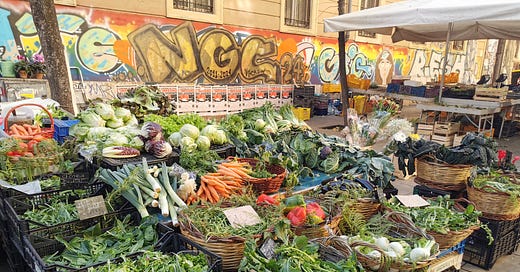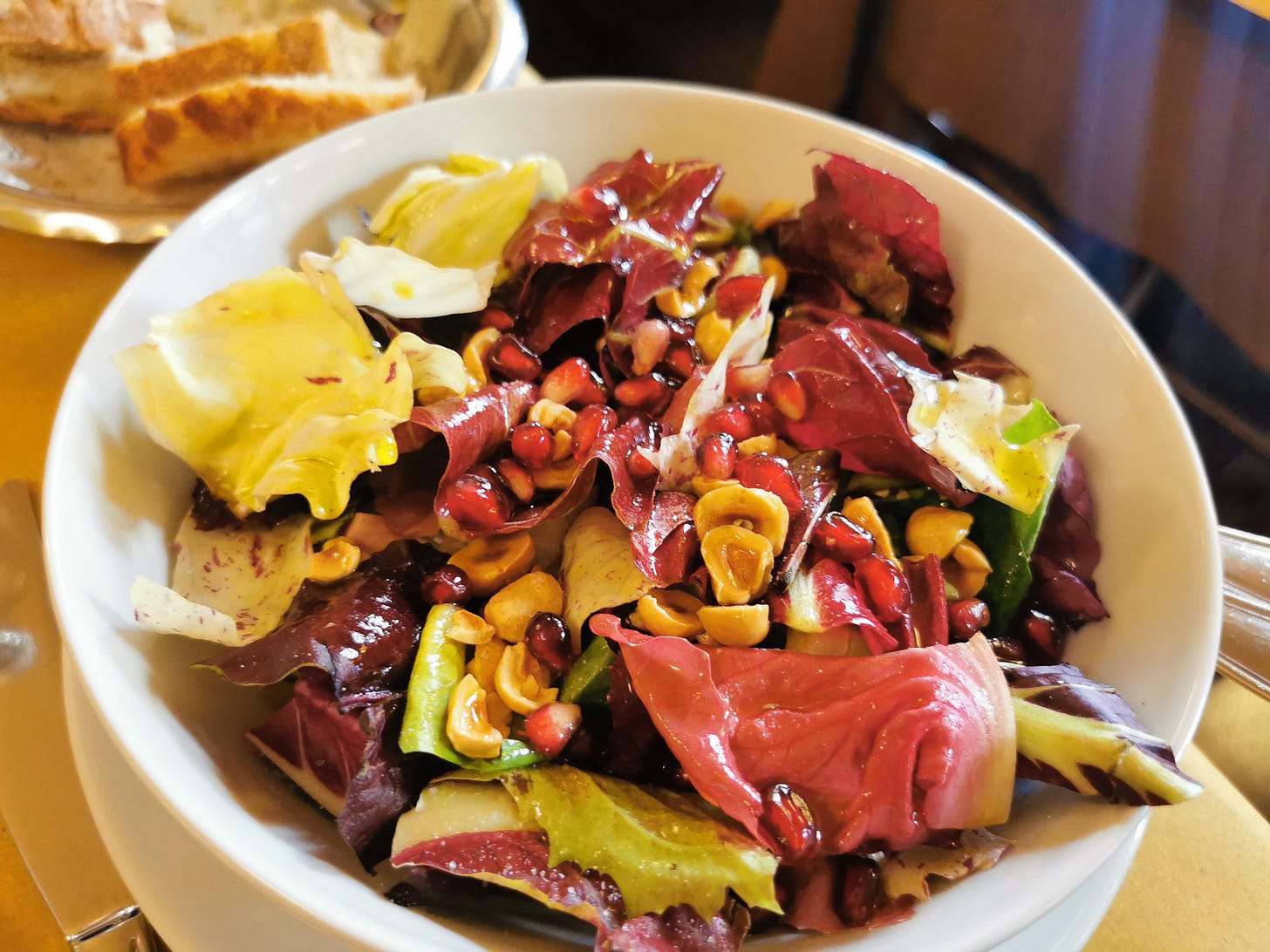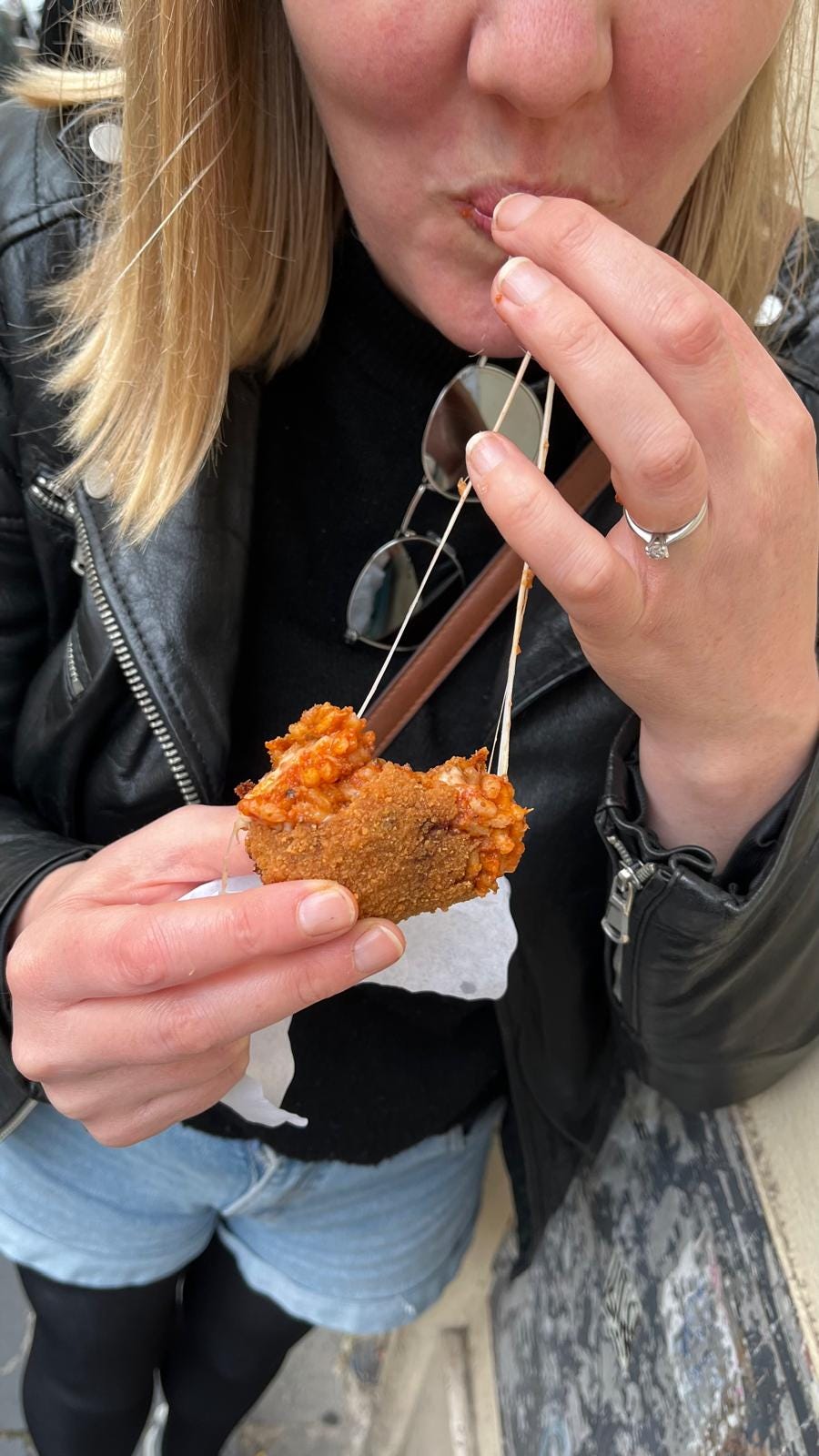What Rome made me think about Italian food and drink culture
And how much we can adopt in our own lives
This week saw my fourth visit to Rome. This is a city that grabbed me by the stomach during my first visit in 2008 and has never let go.
It sounds like a cliché but Romans know how to eat and drink. Hell, it’s what keeps me coming back more than anything else. You can lead this horse to the Colosseum or the Vatican but I will only drink from Roman food and drink culture.
I’m writing this from approximately 36,000 feet somewhere above Spain. Without the distraction of the internet, I’ve had the opportunity to reflect on why I love Rome so much. About what it has taught me about food and drink over the years. About what we could do better in our own countries (assuming you don’t already live in Italy).
I’ll be writing one of my in-depth food and wine travel guides to Rome early in the new year, but for now, this is a non-exhaustive list of what — when it comes to food and drink — Rome does so damn well.
The Italian big appetite cliché is real. This I already knew but I was reminded when I watched a small elderly couple take down deep-fried artichokes, a first course each of pasta (whose portion size felled me on its own), followed by a pile of stewed oxtail that Henry VIII would be proud of. I didn’t stay around to see if they ordered dessert. I like to think so.
Another cliché, Italian dishes really do live and die by the quality of their ingredients. Cacio e pepe sauce may “just” be emulsified cheese and pasta water with black pepper, but it’s the quality of that cheese, pepper, and pasta that turns it from bleh to fuuuuuck.
Because pasta sauces are an art form in Rome. People call them simple but I’ve tried and failed to make some of them (especially Carbonara) more times than I care to mention.
The secret to good Roman pizza by the slice is to use more olive oil than you think. I ate one of the best pizza rossa of my life just because I walked past a guy who crunched into his slice outside a random bar in the Pigneto district. It sounded just how I want Roman pizza to sound — and that was because of the olive oil in the base. Not to mention how much oil was in the tomato sauce.
Which leads nicely to my next point. Olive oil is life and the Italians know it.
More places should nail their political colours to the wall. One of my favourite wine bars in town is Vinaietto in the Centro Storico. This has always been a left-leaning bar and they don’t hide it. You see it everywhere from their posters to their Instagram. I’d love to see more of this because it means we can make more informed decisions on the places we want to give our money to. It’s not just about supporting local businesses anymore, it’s about supporting local businesses that align with your values.
Speaking of which, the Italian enoteca is the best blueprint for a wine bar and this is a hill I will die on. I love the model so much, I recreated it in the UK with my own wine store and bar, Vino Vero. Enotecas mean cheaper wine (bottles are marked up via a small flat fee from retail rather than a percentage markup). And it means a more informal atmosphere. The traditional pomp and circumstance of wine doesn’t exist in enotecas and for that, I will always love them.
Bitter greens are a way of life and when they go for it, they go hard. We had piles of chicory, radicchio, or chard at nearly every restaurant we visited. The local markets were full of them. A salad of radicchio, pomegranate, Piemontese hazelnuts and grassy olive oil at Piatto Romano in the Testaccio neighbourhood was one of the highlights of the trip — seriously.
Just a few pickles make a sandwich. I thought of this as I chowed down on a famous porchetta sandwich close to Termini station. I hadn’t noticed one of the options included pickled greens and bitterly regretted their omission from mine. Deli meats and pickles are bedfellows. Never forget that.
Maritozzi - Rome’s famous cream-filled buns - are delicious but not enough for breakfast when you’re walking 30,000 steps a day (not difficult in Rome).
Italy’s coffee culture can’t be beaten. Take a spot at the counter, order a cafe and watch the “dance of the waiters.” Coffee comes fast here which means the servers move at a pace I call “boss pace.” Efficiency at its finest.
Don’t be like that woman on Eat Pray Love though and scold them for scolding the milk whilst the poor guys are just trying to serve seven people at once. That is not the vibe, especially as a tourist.
Neapolitan pizza may have a sexy reputation in the pizza world but Roman pizzas — thin and crunchy discs of deliciousness — are a wonderful thing.
The way we’re taught to make pizza in places like the UK or US is an abomination and so much of it comes down to how long you prove the dough. I was taught as a kid an hour would be long enough. Nowadays I’ll do 8 hours minimum. And my favourite pizza-by-the-slice joint in Testaccio does a 100-hour prove. Time is taste, my friends.
Chicken cacciatore might not be what you think it is. In the UK, I was taught it was chicken breast slathered in a barely simmered tomato sauce. Yawn. I discovered they make it very differently in Rome (thanks for the tip, Katie Parla), with white wine and woody herbs like rosemary. A different, vastly improved beast.
As far as drinking snacks go, suppli—deep fried rice and mozzarella balls —are about as good as it gets.
And finally, aperitivo hour(s) is alive and well and living in Rome. And their citizens are all the better for it.








Vinaietto is just one of those places that carries a local charm and a feeling of truly blending in among the locals in Rome. After a long day of playing tourist in The Eternal City, I grabbed a small table in a corner and a bottle of Amarone to wind down the day. To sit, to write and maybe even observe a slice of life stirring around me that evening. What I got instead was a wonderful end of the day spent with a local in Rome who had wandered in to a very crowded wine bar and seemed to have the same agenda as I did, but couldn't find a place to sit. I invited him to join me at my table and share my bottle with me. He happily accepted. I spoke very little Italian and he spoke little to no English. But here was the interesting thing about Latin based languages, I spoke in Spanish, and he spoke in Italian, and somehow, we managed to have an amazing conversation about life in Rome, the changing tides of tourism and its effects on the local culture. One bottle became two. And at the end of the evening, as we stood to go our separate ways, I not only received an embrace and a kiss on both cheeks, but he also refused to allow me to even pay for one of the bottles of wine. In a wine bar in the heart of Rome, I shared an incredible evening with a stranger that slowly became an acquaintance, and then a new friend. We shared stories. We shared wine. And we shared a bit of ourselves with one another, making the evening just a little more special. And in the end, connection and conversation is what experiencing Rome is all about.
I envy that abundance of bitter greens so much. Our range of winter greens in the UK is so limited in comparison.